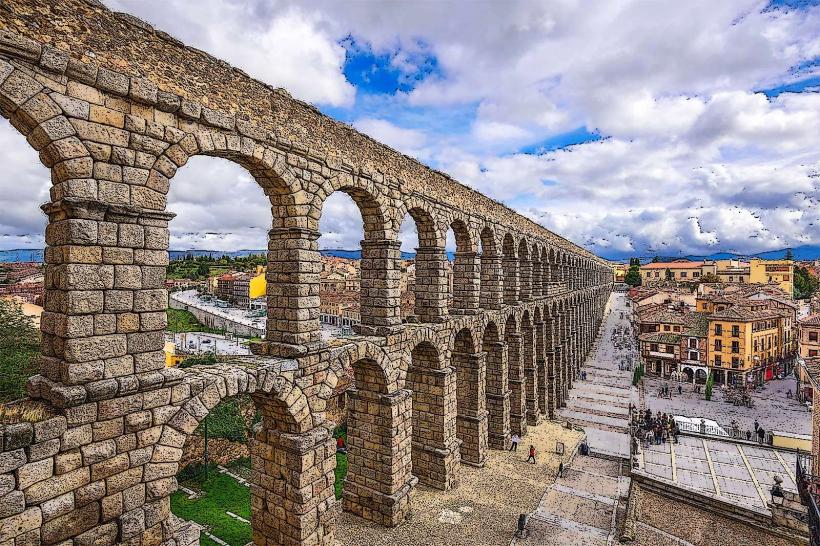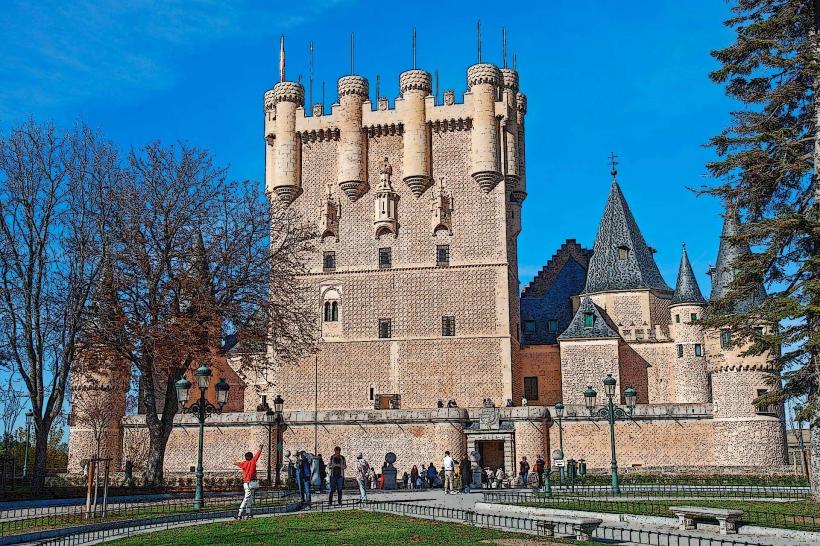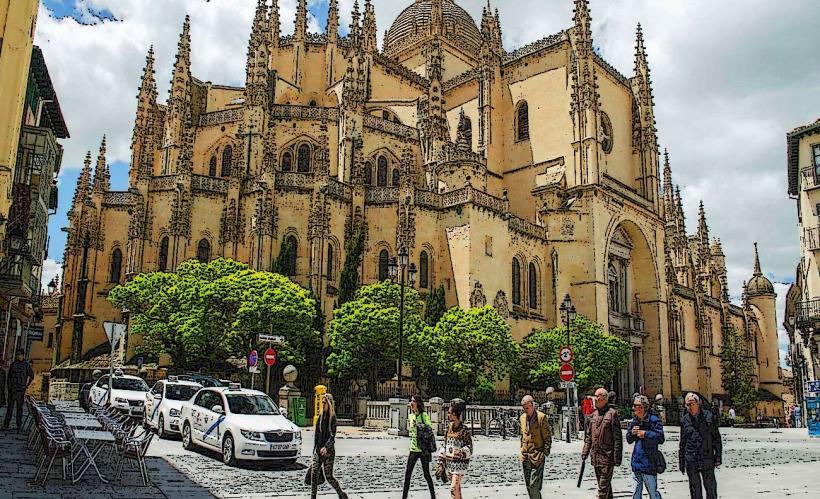Information
Landmark: Segovia City WallsCity: Segovia
Country: Spain
Continent: Europe
The City Walls of Segovia are an important historical feature of the city, representing its medieval defenses and offering a glimpse into the strategic importance of Segovia throughout history. These walls, which date back to Roman times, have played a key role in the city's defense, evolution, and protection against invaders. Today, they stand as a testament to Segovia’s rich heritage, blending Roman, medieval, and modern elements.
History and Origins
The origins of Segovia’s city walls can be traced back to the Roman period, when they were constructed to protect the city from military threats. Over time, the walls were expanded, rebuilt, and reinforced during the Middle Ages to adapt to the city’s growing needs and the evolving nature of warfare.
Roman Period
- Roman Walls: The original city walls were built during Roman times to protect the settlement of Segovia, known as Segovia (Flavia) during the Roman Empire. These walls, constructed with stone and brick, were part of the strategic Roman defense system to protect the city and its people.
- The Roman Aqueduct, which still stands today, was part of this defense network, providing water to the inhabitants while also serving as a landmark for the Roman city.
Medieval Period
- The walls were expanded and reinforced during the Middle Ages, particularly after the Reconquista (the Christian reconquest of Spain) in the 11th century. The Almohad and Christian forces built new fortifications to protect Segovia from the growing threats of the time.
- Castles and towers were added to the walls, and the city was further enclosed by a moat and gateways to improve defense.
Renaissance and Beyond
- By the Renaissance period, the need for such a vast defensive system had lessened, and much of the walls were dismantled or repurposed. However, sections of the walls, along with the gates and towers, remain intact today.
Architectural Features
The City Walls of Segovia are a blend of architectural styles, ranging from the Roman, through medieval, to Renaissance influences. Some key features include:
1. Roman Sections
- Stone Foundations: The Roman walls are composed of large stones, with rectangular and square stones arranged without mortar, characteristic of Roman engineering.
- Towers and Gates: While much of the original Roman walls have been destroyed or integrated into later constructions, remnants of Roman gates and towers still remain in certain areas.
2. Medieval Sections
- Fortified Walls: During the Middle Ages, the walls became higher and thicker, built to withstand attacks by siege weapons and battering rams. These sections include larger fortified gates, such as San Cebrián Gate and San Andrés Gate, which are notable for their archways and stone defenses.
- Watchtowers: Several watchtowers were added to the walls, offering elevated views of the surrounding countryside. These towers were critical for monitoring enemy movements and defending the city.
3. Gates
- There are several notable gates in the city walls, which served as entrances to Segovia and were strategically positioned for defense. Some of these gates have been well preserved or restored:
- San Cebrián Gate: Located in the western section of the walls, it is one of the oldest entrances to the city.
- San Andrés Gate: Another medieval gate, notable for its Gothic style and sturdy construction.
- Postigo del Sol Gate: A smaller but equally important medieval gate.
4. Renaissance Modifications
- As the military threat lessened during the Renaissance, the city walls were less vital for defense, and sections were dismantled. Some gates and towers were integrated into the city's urban development, while others were repurposed for domestic use.
The City Walls Today
While much of the original medieval and Roman walls have disappeared, sections still stand and offer an incredible view into the city’s past. Visitors can still walk along the remaining walls, explore towers, and appreciate the panoramic views of the surrounding landscape.
Notable Points of Interest Along the Walls:
- The Alcázar of Segovia: The city walls connect to the Alcázar, the city’s most famous fortress, providing defense to one of Segovia’s most important landmarks.
- The Jewish Quarter: The old Jewish Quarter lies within the confines of the medieval walls, and much of the street layout still follows the old defenses.
- The Eresma River: Parts of the walls follow the Eresma River, offering visitors the chance to explore some of the riverfront areas while enjoying views of the city and the countryside.
Significance and Cultural Heritage
The Segovia City Walls are a key part of the city’s cultural identity and history. As a whole, they embody the layers of Segovia's evolution from a Roman stronghold to a medieval kingdom and later a Renaissance city. Today, the walls serve as an important landmark for visitors and a reminder of the city’s strategic importance throughout Spain’s history.
The walls not only offer insight into Segovia's military and urban past but also provide spectacular views of the surrounding countryside, the Alcázar, and other iconic Segovian landmarks, like the Segovia Cathedral and the Aqueduct.
Visiting the City Walls
Visitors to Segovia can walk along some sections of the city walls, especially in areas near the Alcázar and Jewish Quarter. Here are some tips for exploring:
- Walking Tours: Many guided walking tours take you along the walls, explaining their historical importance and showing visitors the best-preserved sections.
- Accessibility: Most sections of the walls are accessible to the public, although certain areas, such as the highest parts of the walls and towers, may be limited for safety reasons.
- Views: The walk along the city walls offers spectacular views of the Eresma Valley, Segovia Cathedral, Alcázar, and the surrounding mountains.
Conclusion
The City Walls of Segovia are an essential part of the city’s history and heritage. From their Roman origins to their medieval fortifications and later Renaissance transformations, the walls reflect Segovia’s rich past as a strategic military hub, royal city, and cultural center. Visiting these walls offers a unique opportunity to explore Segovia’s layered history, providing breathtaking views and a deeper understanding of its ancient defenses.




